The Way of St. James and the “European Identity”
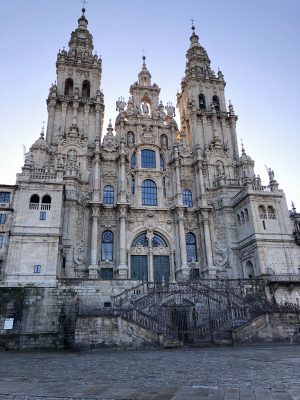 The Way of St. James is a unique itinerary representing the foundations of the European identity. Still today, its origins are strongly felt and present among pilgrims. Inspired by literary geography, the research analyses the present of this historical legacy by exploring the pilgrims’ travel diaries. Results prove how Heritage and Culture are two literary topics and, consequently, contemporary narratives are producing a cultural discourse on the Way that enhances and revisits its unique identity.
The Way of St. James is a unique itinerary representing the foundations of the European identity. Still today, its origins are strongly felt and present among pilgrims. Inspired by literary geography, the research analyses the present of this historical legacy by exploring the pilgrims’ travel diaries. Results prove how Heritage and Culture are two literary topics and, consequently, contemporary narratives are producing a cultural discourse on the Way that enhances and revisits its unique identity.
The Way: the Origins
The origin of the Way of St. James goes back to the ninth century, when the remains of the Apostle St. James the Greater were discovered and authenticated. After this discovery, known as the inventio¹, the Way to the sacred place of the Apostle began to take on elements typical of a tourist attraction. It was provided with accommodations for pilgrims, monumental, historical and environmental attractions, and it even had its own guide book: “Liber Peregrinationis” (Marchena, 1993). From the year 1000 onwards, the pilgrimages established routes from East to West. The Church turned these local and individual movements into universal and collective phenomena; sanctuaries throughout Europe lost their autonomy and were integrated into the peregrinations maiores: Santiago, Rome and Jerusalem. The Compostela itinerary was considered the most important since it attracted the most pilgrims, acquiring not only a religious meaning but also a political, economic and cultural one.
Starting in the 11th century, thanks to a period of peace in Europe, the pilgrimage attained its maximum form of devotion and pilgrims received more care: cities were created, roads were repaired, bridges were built, hospitals and hostels were founded. Numerous texts were written on the Compostela pilgrimage during the 12th century, which became known as the Compostela century. The pilgrimage began to decline in the 14th century, due to the black plague and numerous civil wars. Later, during the 16th century, the abuse of selling Indulgences, the birth of the Protestant Reformation and the subsequent split within the Church contributed to the pilgrimage’s loss of importance that continued throughout the Renaissance. Although pilgrims continued travelling to Compostela, the phenomenon experienced a general decline, which resulted in the city of Santiago’s prostration in popular imagination and worship.
Medieval pilgrimages are considered by many as the origin of tourism; after such, the modern mentality gave way to a new conception of space and travel. New physical and moral horizons were opened up, and the monastic ideal was replaced by Renascent curiosity (Lois & Lopez, 2015). Therefore, from the 15th century onwards, travellers were romantic visitors and explorers. One of the best examples is the “Grand Tour,” a custom started by the English aristocracy by which young nobles travelled extensively around European countries to improve their education. These educational trips continued during the 16th century. The Way offered a possibility of undertaking this Grand Tour. Even during the 18th century, the Way’s decline was due to the Church’s loss of power as a consequence of the Modernity and its secularism.
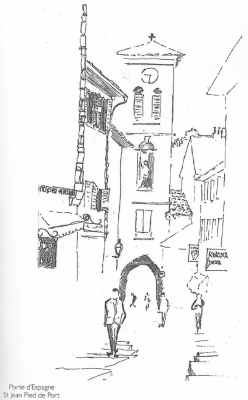
Porte d’Espagne. St. Jean Pied de Port. Courtesy of Dryden. Reproduction authorized.Pilgrimages to Santiago never stopped entirely, and starting in the late 19th century there was a resurgence in the number of pilgrimages, firstly due to Church propaganda from 1875 onwards and secondly because of the (re)appearance of the Apostle’s remains, which took place around 1879, after having been concealed in the 16th century to protect them from Protestantism and religious wars. During times of nationalism, Spain wanted “figures” as heroes and saints that could bolster national pride; the Apostle James became a “legend of Spanish and Galician nationalism” and during the Civil War he stood for unity, Catholicism and universal destiny (Santos and Trillo, 2017). During the 20th century, there was a gradual resurgence of pilgrimages to Santiago and religious tourism gradually took shape. From 1954 onwards, the Jacobean phenomenon started becoming a possible resource for the city of Santiago. Religious-themed trips were promoted and infrastructure was developed to provide accommodation for pilgrims and tourists. However, rapid tourist growth in Spain meant that the pilgrimage inevitably started to take on all kinds of aspects related to tourism, especially from 1965 onwards. The Santiago Trust was created to collaborate with the Ministry of Information and Tourism and promote Compostela’s infrastructures. The Directorate General for Businesses and Tourist Activities invested in providing accommodation along the Way, with the construction of new hotels and the conversion of private homes into boarding houses, while the Way and its infrastructures were renovated. The renovation initiated in the 1960s was accompanied by the introduction of the concept of pilgrim shelters and hospitals; these formed the basis of the revitalisation of the Way that continued during the 1971 Holy Year.
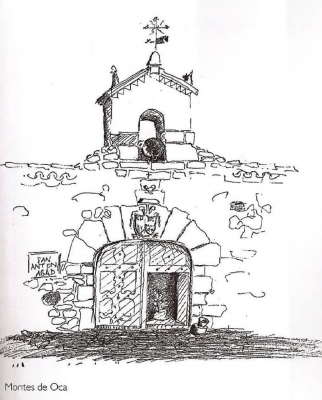
Montes de Oca. Courtesy of Dryden. Reproduction authorized.At the beginning of the 1960s, the Way was promoted as a new tourist product capable of revitalising this sector. It was a tourist option that satisfied the new demands for diversified and cultural tourism, while naturally respecting tradition and the past. More recently, in the 1980s, pilgrimages and the city of Santiago really started to become popular. Among the milestones of this process, it is worth mentioning the designation of the historic city as a World Heritage Site (WHS) by UNESCO (1985) and the declaration by the European Council of the Way of St. James as the first European Cultural Route (1987). Its international protection arrived in 1993 when the French Route was recognized as a WHS. This was also the first Holy Year to experience mass pilgrimages along traditional routes; from then on, the phenomenon was no longer confined to Holy Years (Santos & Lopez, 2015). The 1993 Holy Year marked the conversion of both Santiago and the Camino into major Spanish and international tourist destinations (Santos, 1999; Lois, 2000).
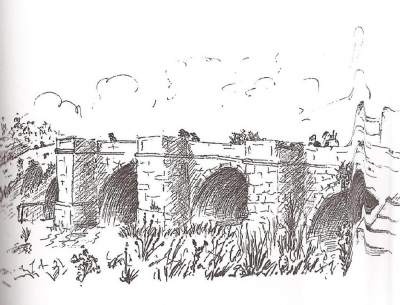
Bridges. Courtesy of Dryden. Reproduction authorized.This promising future led to a boom in the tradition of pilgrimages to Santiago. The starting point for the Plan Xacobeo 93 was the idea that the Way of St. James was the best-known brand in Galicia and easy to promote on European and world markets; as a result, the 1993 Holy Year turned Santiago and the Way into two of Spain’s great tourist destinations (Santos, 2006; Santos & Lopez; 2015). By then, the pilgrimage space had been transformed into a tourist space, with pilgrims and tourists requiring services, basic infrastructures and installations (hotels, public hostels, etc.).
Travel diaries inform about the many features of the Way
The content of travel diaries expresses a more or less emotional involvement which affects the resulting representations. Travel diaries inform about the many features of the Way; there are stages of beauties and wild nature and paths without charm following the line of the motorway. By means of these descriptions, new information is introduced, such as in the case of Rufin (2013) who states that The Way responds to different emotional demands and interprets various emotional processes. As a matter of fact, silence and immensity enhance imagination and flux of thoughts that fill the pages of the travel diaries.
The cultural representations of The Way focus in the first place on highlighting the landscapes that the pilgrims see, appreciate and contemplate; it results from a “stratification” of values and beliefs, meanings and values, as the landscape is also a heritage that testifies to the values of the past. In this way, heritage represents the time that passes, its lasting physical traces preserve testimony and serves as a bridge between the past and the future. In the case of The Way, it testifies the efforts done to bring Europe together, the movements of people involved in the interchange of cultures and knowledge with the intention to get peoples closer, apart from the most widely known “religious mission”.
The pilgrimage route to Santiago de Compostela is one of the arias of madness of the European opera, a gigantic round-trip migration, a movement of millions of pedestrians, an endless stream of pilgrims from all the lands of Christianity recognizable by the Jacobean shell, which was received at Mont St. Michel in Tours, Vézelay, Puy and Arles and directed through the Pyrenees on the way to Santiago. What this contained of religious ferveur, political meaning, social, economic and artistic development can hardly be imagined. An army was passing through for centuries, constantly, in a Europe where foot was the measure (proper translation from Nooteboom, 2006, p. 206).
The position expressed by Nooteboom is close to the one of the French author J.C. Rufin (2013), who clearly exemplifies the feelings of pilgrims along the Route, in fact in his opinion: “the pilgrimage offers the unique possibility not only to rediscover the vestiges of the vanished world of triumphant Christianity, but also to have the experience of what it was” (Proper translation from Rufin, 2013, p. 130). Once again, authors and pilgrims are informing about the political role played by The Way for the European continent. Walking along the itinerary (not just the religious route) was an occasion to strengthen the relationships among the different countries, thus contributing to construct a European identity.
The material heritage that since centuries connotes and properly “identifies” The Way and the European history reminds of the primordial function of The Way. Sanctuaries, churches and monasteries are not only religious buildings, they are also symbols of a great past during which The Way was the itinerary connecting the West and the East of Europe. Rufin (2013) believes that nothing has changed since then, and this means that The Way is still the symbol of the European identity. Undoubtedly, it is true because its charm and the uniqueness remind us that the First European Cultural Route did not declined, rather it is being magnified thanks to the “work” of pilgrims who contribute to its fame writing and publishing travel diaries, among others forms of contemporary productions.
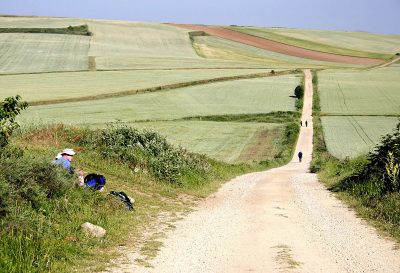
European pilgrims on the road to Santiago de CompostelaFrom his point of view, walking The Way is not just a physical and spiritual activity, but it also a didactical and educational exercise, because it enables to learn and enjoy the European legacy that cultural heritage personifies. Its permanence is an added value for The Way and contributed to its increasing success; in fact, as travel diaries confirm, pilgrimage is still a movement of people and ideas, of values and cultures. These factors are literary translated in the pages of the contemporary travel literature, thus reinforcing the image of the route as a channel of communication for cultural, social, artistic and literary exchanges. In several passages, we can appreciate the direct involvement in the landscape of The Way to understand the Christian fabric with which Europe was so long involved (Rufin, 2013). In other words, the historical European identity “speaks” about itself; medieval Christian values are still embodied in its material heritage and participate, somehow, in the introspective experience of The Way. Also S. MacLaine recognizes that “in every village I was awed by the opulent richness of churches”. According to John Ruskin “architecture is the only means we have to keep alive a link with the past to which we owe our identity, and which is constitutive of our being” (1989: 37). Likewise, architecture and, in general, heritage tell us about our past. If we know “listen to these voices” we could establish a dialogue between our present and the past that produced it and rediscover the original identity.
Heritage and Culture along The Way support the creation of a discourse in the territory and the artistic language that is adopted becomes a code of the same. The relationships between Heritage, Power and Identity go through a complexity of images and a plurality of possible interpretations; all of them undergo a selective process.
Heritage and cultural sites of The Way that pilgrims mention and describe in their travel diaries or in general, in their books, are useful for a spatial representation leading to “mental maps”. As a matter of fact, their geographical information situates the reader while following the experiences of the author; it is another strategy to make sense of their place in the world. So, assuming its comparison to “representation and image”, the heritage of The Way of the literary production contributes to the creation of an image of Santiago and The Way reinforces a political discourse.
Each creator is loading the space of The Way with his or her poetics
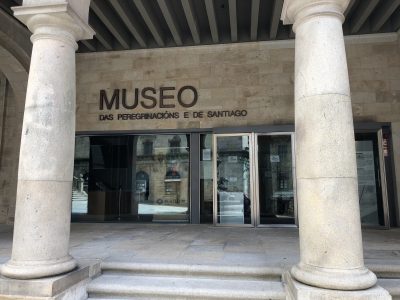
The museum of Peregrinations, © R. BelotHeritage is an indisputable feature of The Way, supported by the strict relationship between territorial history and history of art, which maintain alive the medieval past, the “Golden Age” of the Pilgrimages. The spatial representations of these travel diaries are extremely valuable, because their critical approach reveals another form of aesthetic sensibility that their authors employ to reach impressive and suggestive representations. Thus, each creator is loading the space of The Way with his or her poetics, that is, his or her personal discourse according to which some aspects are prioritized over others, although closing the eyes and following the literal stream, we are indeed able to follow the route of the author thanks to cultural and natural well-known references. These literal and cultural maps orient the reader not only in the present, but it also “literature helps readers get a sense of the worlds in which others have lived, currently live, or will live in times to come”.
The detailed descriptions of (material and immaterial) cultural heritage along The Way demonstrate that the space is similar to the main character. Thus, the creative writing of the pilgrims-authors is somehow defined and determined by the spatial determinants and history, that in the case of The Way is “personified in the cultural heritage”. Literary analysis addressing such a meaningful space as the one of The Way is a methodological exercise that helps to understand its changes. Considering literature as a new formula for understanding the lived spatial reality, capable of capturing human attention, creating, interpreting different representations might reveal the permanence of past values.
The intertextual analysis confirms a kind of awareness about cultural and heritage sites, evoking the past as a strategy to locate the reader. In fact, referring to cultural sites might be a strategy to create empathy between the author and the reader. This objective is also reached by means of a literary geo-poetics, in that pilgrims follow the emotional stream of memories. Spirituality enhances geo-poetic descriptions, since it strengthens relationships with the environment. Evidently, heritage can become an economic and political resource. Its cultural value lies in the meaning that is recognized in terms of the relationships between the immaterial values of the past and the interpretations of the present, since it is the individual that includes it within a given discourse.
In conclusion, European heritage is a relevant and operative concept that imbues the perception and representation of the Space of The Way.
Lucrezia Lopez, Xosé M. Santos
Bibliography
Alexander, N. (2015). On Literary Geography. Literary
Choay, F. (1992- 2007). Alegoría del Patrimonio. Barcelona: Editorial Gustavo Gili.
Lois González, R.C., Lopez, L., & Santos, X. (2015). Promoting or being promoted? The case of the Way of St. James. In G. Bambi, & M. Barbari (Eds.), The European pilgrimage routes for promoting sustainable and quality tourism in rural areas. International conference proceedings (pp. 817–833). Florence: Firenze University Press. Retrieved from http://www.fupress.com/archivio/pdf/2947_ 7308.pdf
Lopez, L. (2019a). A geo-literary analysis through human senses. Towards a sensuous Camino geography. Emotion, Space and Society, 30, 9-19.
Lopez, L. (2019b). Peregrinas en Camino. Los espacios literarios como fuentes de estudio. In Renner Rodrigues Soares, J. et al. (ed.): Perspectivas de gênero na indústria turística: estudos necessários. Thomson Reuteurs (accepted for its publication).
Lopez, L., Lois Gonzáléz, R.C., & Castro Fernández, B.M. (2017). Spiritual Tourism on The Way of Saint James. The Current Situation. Tourism Management Perspectives, 24, 225-234.
Lopez, L., Santomil, D., & Lois, R.C. (2015). Film-induced tourism in the Way of Saint James. AlmaTourism. Journal of Tourism, Culture and Territorial Development, 4, 18-34.
Lopez, L., & Santos, X. (2019). Analysis of Territorial Development and Management Practices along the Way of St. James in Galicia. In M. Griffiths & P. Wilthshier, Managing Religious Tourism (pp. 112-123). Oxfordshire: CABI.
Mumford, L. (1996). La Ciudad en la historia. Buenos Aires: Ediciones Infinito.
Rufin, J. (2013). El Camino Inmortal. Barcelona: Duomo Editorial.
Santos Solla, X.M. (1999). Mitos y realidades del Xacobeo. Boletín de la Asociación de Geógrafos Españoles 27, 103-117.
Santos Solla, X.M. (2006). El Camino de Santiago: Turistas y Peregrinos hacia Compostela. Cuadernos de Turismo, 18, 135-150.
Santos Solla, X.M. (2016). The Way of Saint James as an event: politics and nation. Journal of Policy Research in Tourism, Leisure and Events, 8, 233-248.
Santos Solla, X.M., & Lois González, R.C. (2011). El Camino de Santiago en el contexto de las nuevas ofertas turísticas: una aproximación teórica. Estudios Turísticos, 189, 95–116.
Santos Solla, X.M., & Lopez, L. (2015) Tourism Policies in a WHC: Santiago de Compostela (Spain). International Journal of Research in Tourism and Hospitality (IJRTH) 1, 1-8.
Santos Solla, X.M., & Trillo Santamaría, J.M (2017) Tourism and nation in Galicia (Spain). Tourism Management Perspectives 22, 98-108.
To access the full version of this article, especially the methodological part, see the MOOC of the Propeace Project: http://mooc.propeace.eu/

 Université Jean Monnet
Université Jean Monnet